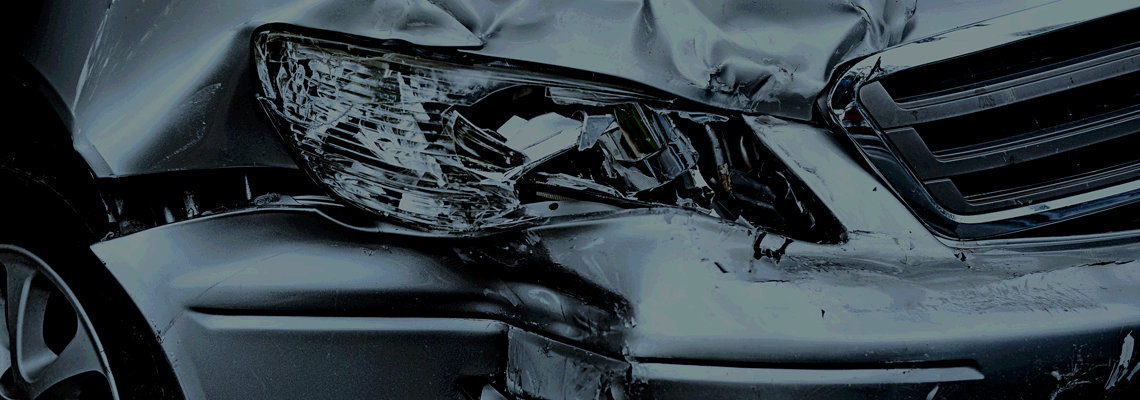
HOW MUCH CAR INSURANCE DO I NEED?
I have been practicing personal injury law for over 30 years, both on the defense and plaintiff side, and I have come to conclude that very few Nevada drivers have sufficient insurance. Las Vegas and Henderson drivers are getting very little useful information from their insurance companies about how much car insurance they need. I don't think there is any one clear answer for just how much insurance any Nevada driver needs but the following might provide some clarification for when you are purchasing or updating your current auto policy. Before I can discuss what kind of car insurance c coverage you might need, I first need to explain the various coverages available.
Liability Coverage. This coverage is available to indemnify you should you be found at fault causing a car accident and the other driver was injured. In other words, if you cause an accident and the other person has $10,000.00 worth of bodily injury or property damage, your insurance company will pay the other driver up to your policy limits. Nevada has minimal policy limits of 15/30, $15,000.00 per person and $30,000.00 per accident. While most polices we see have the 15/30 minimal limits, we also see coverages ranging from $15,000.00 to $500,000.00. How much liability coverage you need depends on a number of factors. For example, if you have substantial net worth, you may want more coverage. Your liability limits should be determined by how much coverage you think you might need. Probably the most important factor in determining your liability limit is how much underinsured motorist coverage you want. I'll discuss underinsured motorist coverage in the next paragraph. Carriers limit your underinsured motorist coverage to the amount of your liability coverage.
Uninsured or Underinsured Motorist Coverage. This is probably the most important coverage you can have and is determined in part by how much liability coverage you have. Most Henderson and Las Vegas drivers are operating their vehicle with either minimal coverage or no insurance. Underinsured motorist coverage is available to cover you for damage you suffer as a result of a car accident caused by someone else. By way of example, you may be involved in an accident caused by another driver that has only $15,000.00 in coverage but your damages are well in excess of $15,000.00. Your underinsured motorist coverage will compensate you for damages suffered that exceed the driver-at-fault's insurance coverage. Say your damages are $60,000.00 and the driver at fault has coverage of $15,000.00. Your underinsured motorist carrier would $45,000.00 so long as you have at least $45,000.00 in coverage. I can't tell you how many times we have a client who has been involved in a serious accident that well exceeds the other driver's coverage and the client either does not have underinsured motorist coverage or minimal limits. Again, insurance companies will not provide underinsured motorist coverage that exceeds the insured's liability coverage. Therefore, you may want to consider substantially increasing your liability limits so you have more protection in the form of underinsured coverage.
Medical Payments Coverage. This coverage is available to help pay your medical expenses, regardless of whether the accident was your fault or not. Medical payments coverage typically ranges from $3,000.00 to $10,000.00 and in some cases even higher. The advantage of medical payments coverage is it could impact how much money you actually receive from an accident. If you have health insurance and you use your health insurance to pay for treatment for your injuries, your health insurance contract will require you to pay your health insurance carrier back for medical expenses they have paid for you should you ultimately recover from the person who caused the accident. There is no such requirement with medical payments coverage. Again by way of example, if your health insurance company has paid $3,000.00 for your medical expenses and you ultimately recover $10,000.00 from the driver who caused the accident, you will have to pay your health insurer $3,000.00 from your proceeds from the settlement. If you had medical payments coverage which was used to pay the $3,000.00 in medical expenses, you would have no obligation to pay the insurer who paid the medical payments benefit this netting you $3,000.00 more than you would have received.
Collision Coverage. This coverage is available to pay for damages to your car that may have been caused by you. If you have an auto loan, the lender is going to require that you have collision insurance to protect their security; i.e., your car. Even if your car is paid for, you still may want collision coverage if the car has significant value or if it would be prohibitively expensive to replace the car. If you are involved in an accident that is caused by the other driver, typically that driver's insurance company will pay for your property damage. Sometimes, who caused the accident may be at issue so that the other driver's insurance does not immediately step forward and pay for damage to your vehicle. Under those circumstances, it's nice to have collision coverage so your insurance company can fix your car and then go after the other driver's insurance company for reimbursement. If your car has very little value, you may want to forego the expense of collision coverage.
Additional Coverages. Additional coverage are available under a car insurance policy including roadside assistance, towing, rental car insurance, comprehensive, etc. While these coverages can be important, they are not nearly as critical as the coverages already discussed. Comprehensive coverage covers provides protection for such items as theft and broken windows. The insurance company will provide you with a rental car if your car is in the shop as a result of an accident.
Conclusion. How much insurance you need is dependent on a number of factors including how much protection you think you need. Understanding the various coverage available will help you make the right decision.
